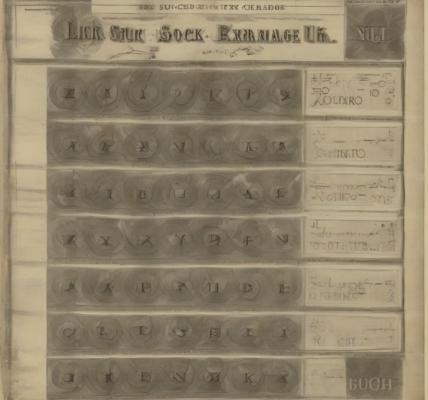Navigating the NYC 1031 Exchange Maze: A Comprehensive Guide
The 1031 exchange, a powerful tax-deferral strategy under Section 1031 of the Internal Revenue Code, offers New York City real estate investors a unique opportunity to reinvest profits from property sales without incurring immediate capital gains taxes. However, the intricacies of navigating this exchange, especially within the complex NYC real estate market, can be daunting. This guide aims to demystify the process, providing a thorough understanding of the rules, requirements, and potential pitfalls.
Understanding the Basics of a 1031 Exchange
A 1031 exchange allows you to defer capital gains taxes when you sell a property (the “relinquished property”) and reinvest the proceeds into a “like-kind” property. “Like-kind” in this context generally means real estate for real estate. Crucially, the exchange must adhere to strict IRS guidelines to qualify for tax deferral.
- Relinquished Property: The property you’re selling.
- Replacement Property: The property you’re buying.
- Like-Kind Property: Generally, real property for real property. There are specific rules regarding personal property exchanges.
- Tax Deferral: The capital gains tax is not eliminated, only deferred until you eventually sell the replacement property.
- Qualified Intermediary (QI): A neutral third party who handles the funds during the exchange, ensuring compliance with IRS rules.
The NYC Real Estate Context
New York City presents unique challenges and opportunities within the 1031 exchange framework. The high value of properties, the competitive market, and the complex regulatory environment require careful planning and execution.
- High Property Values: The substantial capital gains involved in NYC real estate transactions necessitate a well-structured 1031 exchange to maximize tax benefits.
- Competitive Market: Finding a suitable replacement property within the tight deadlines of a 1031 exchange can be challenging. Thorough market research and a proactive approach are essential.
- Regulatory Complexity: Navigating NYC’s zoning laws, building codes, and tax assessments adds another layer of complexity to the exchange process.
- Property Types: The diverse range of property types in NYC – from residential to commercial, from multifamily to industrial – offers flexibility in finding a suitable replacement property.
Key Steps in a NYC 1031 Exchange
Successfully completing a 1031 exchange in NYC requires meticulous planning and adherence to a strict timeline. Here’s a breakdown of the key steps:
- Identify Relinquished Property: Clearly define the property being sold.
- Identify Potential Replacement Properties: Begin researching suitable properties that meet your investment goals and comply with like-kind rules.
- Engage a Qualified Intermediary (QI): A QI is crucial for managing the funds during the exchange and ensuring compliance.
- Execute the Sale of the Relinquished Property: This must be done according to the QI’s instructions.
- Identify and Purchase Replacement Property: The replacement property must be identified within 45 days of the sale of the relinquished property, and the exchange must be completed within 180 days.
- Complete the Exchange: The QI facilitates the transfer of funds to purchase the replacement property.
- Post-Exchange Reporting: Proper documentation and reporting to the IRS are essential to ensure the tax benefits are realized.
Choosing a Qualified Intermediary
Selecting the right QI is paramount to the success of a 1031 exchange. A reputable QI will guide you through the process, ensuring compliance with IRS regulations and protecting your interests. Consider these factors when choosing a QI:
- Experience: Look for a QI with extensive experience in handling 1031 exchanges, particularly in the NYC real estate market.
- Reputation: Check the QI’s track record and reputation within the industry.
- Fees: Understand the QI’s fee structure and ensure it’s transparent and reasonable.
- Communication: Choose a QI who communicates effectively and keeps you informed throughout the process.
Potential Pitfalls to Avoid
Several pitfalls can jeopardize a 1031 exchange. Careful planning and adherence to the rules are crucial to avoid these common mistakes:
- Missing Deadlines: The 45-day identification and 180-day exchange deadlines are strictly enforced by the IRS.
- Improper Identification of Replacement Property: The replacement property must meet specific requirements to qualify for like-kind treatment.
- Improper Handling of Funds: The QI must handle the funds according to IRS rules; any direct handling of funds by the taxpayer can disqualify the exchange.
- Lack of Proper Documentation: Maintaining meticulous records throughout the exchange process is vital for successful completion.
- Failure to Seek Professional Advice: Consulting with experienced real estate attorneys and tax advisors is essential for navigating the complexities of a 1031 exchange.
Tax Implications and Considerations
While a 1031 exchange defers capital gains taxes, it’s crucial to understand the tax implications involved. The deferred taxes will eventually be due when you sell the replacement property. Consult with a tax professional to fully understand the long-term tax ramifications of your exchange.
- Deferred Capital Gains: The capital gains from the sale of the relinquished property are deferred, not eliminated.
- Basis Carryover: The adjusted basis of the relinquished property carries over to the replacement property.
- Depreciation Recapture: Depreciation claimed on the relinquished property may be subject to recapture at ordinary income tax rates.
- State and Local Taxes: Remember that state and local taxes may still apply to the sale and purchase of the properties.
Leveraging 1031 Exchanges for NYC Investment Strategies
1031 exchanges can be instrumental in various NYC investment strategies, allowing for growth and diversification without the immediate tax burden. Here are some examples:
- Upgrading Properties: Moving from a smaller, less desirable property to a larger, more profitable one.
- Diversifying Portfolio: Shifting investments from one type of property to another, such as from residential to commercial.
- Strategic Property Consolidation: Combining multiple properties into a single, more valuable asset.
- Tax-Efficient Growth: Facilitating long-term investment growth by deferring capital gains taxes.
Conclusion (Omitted as per instructions)




